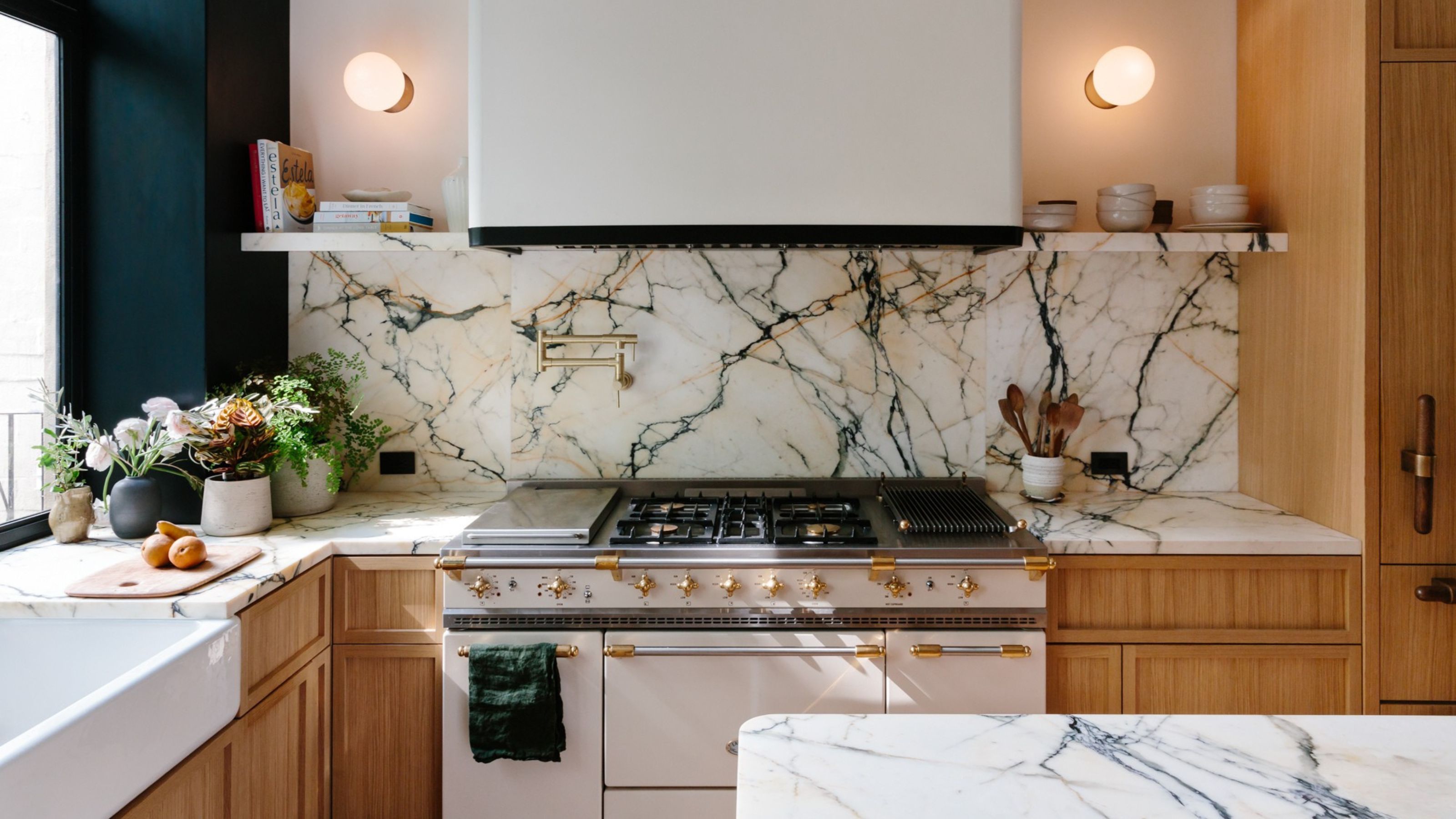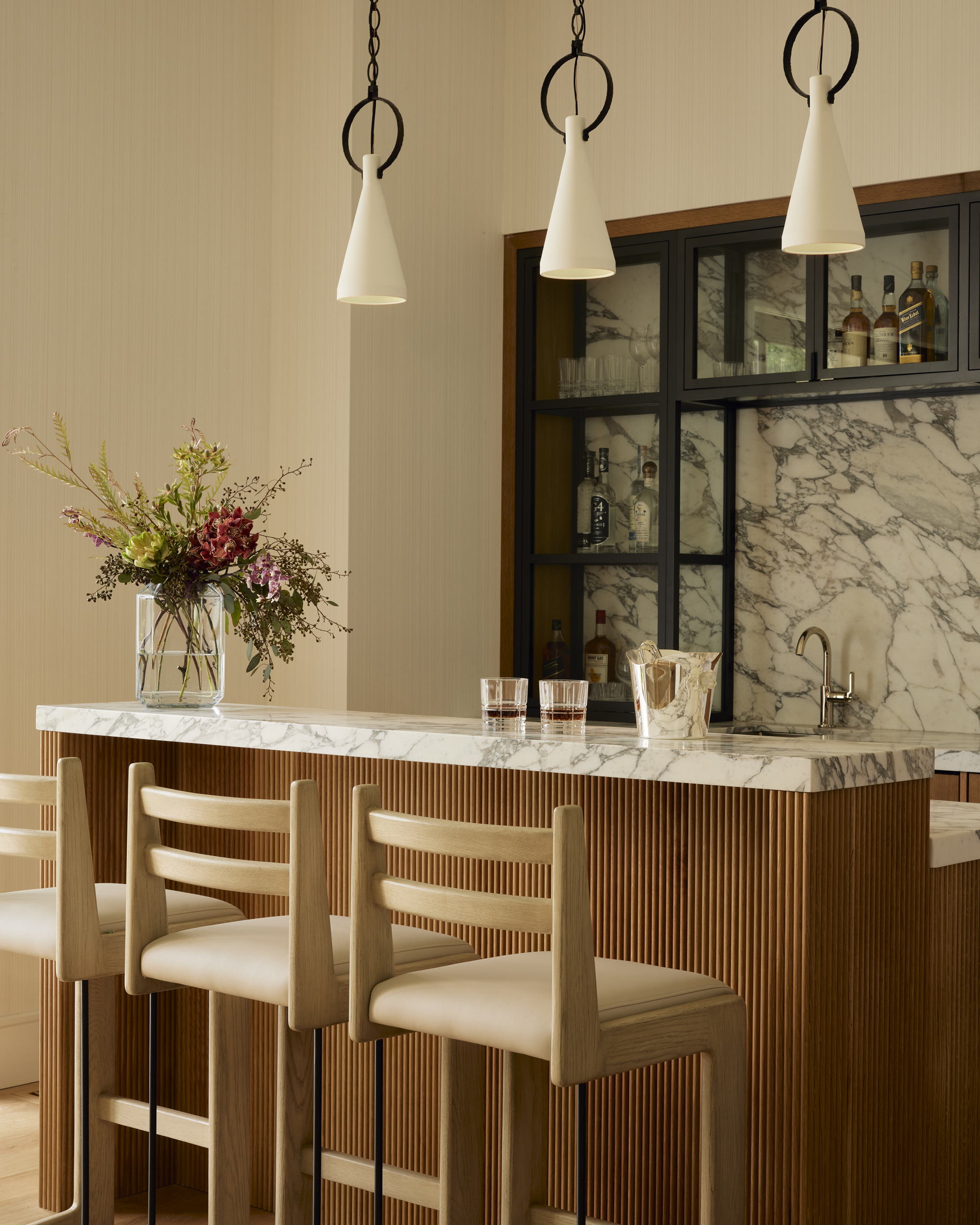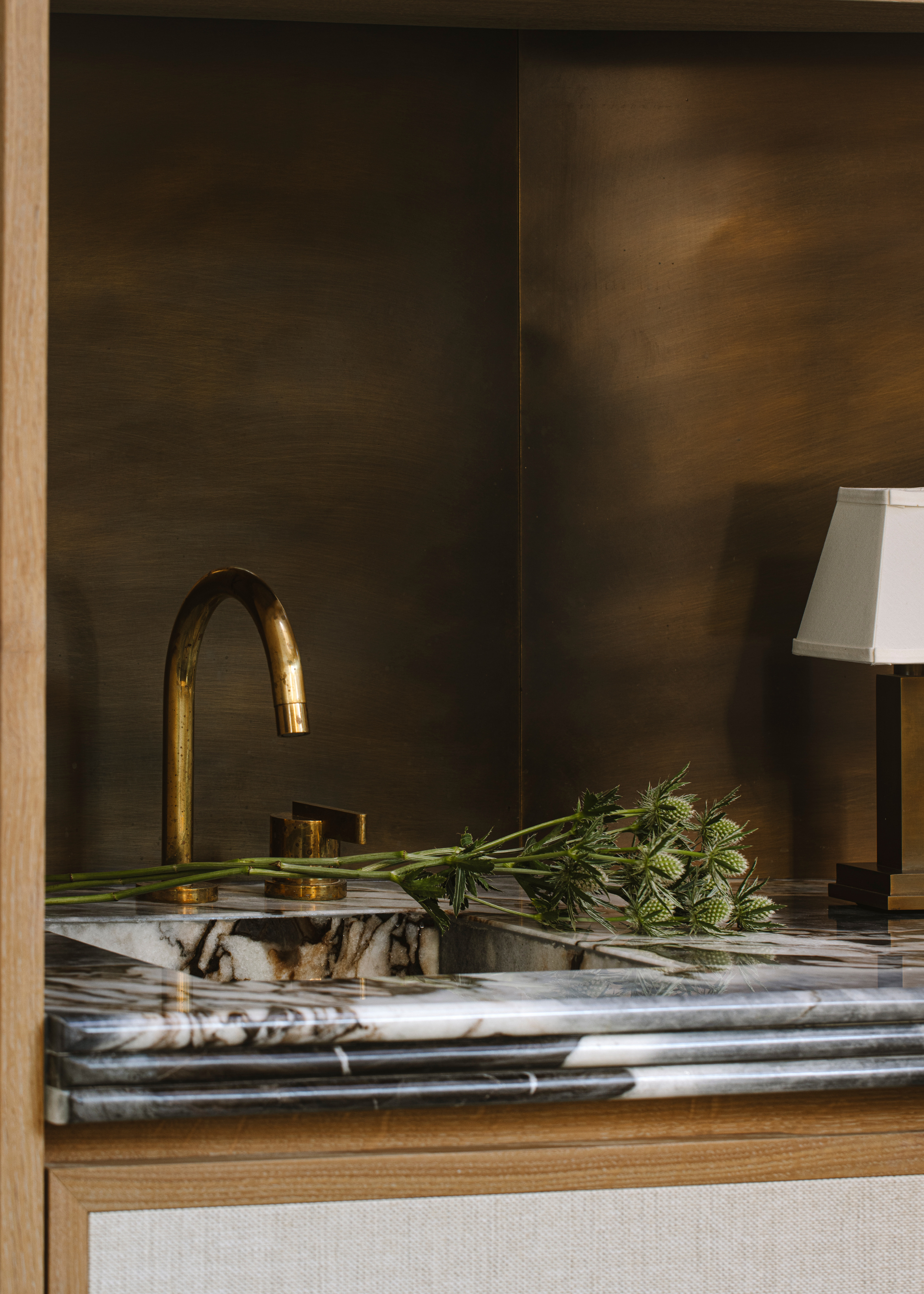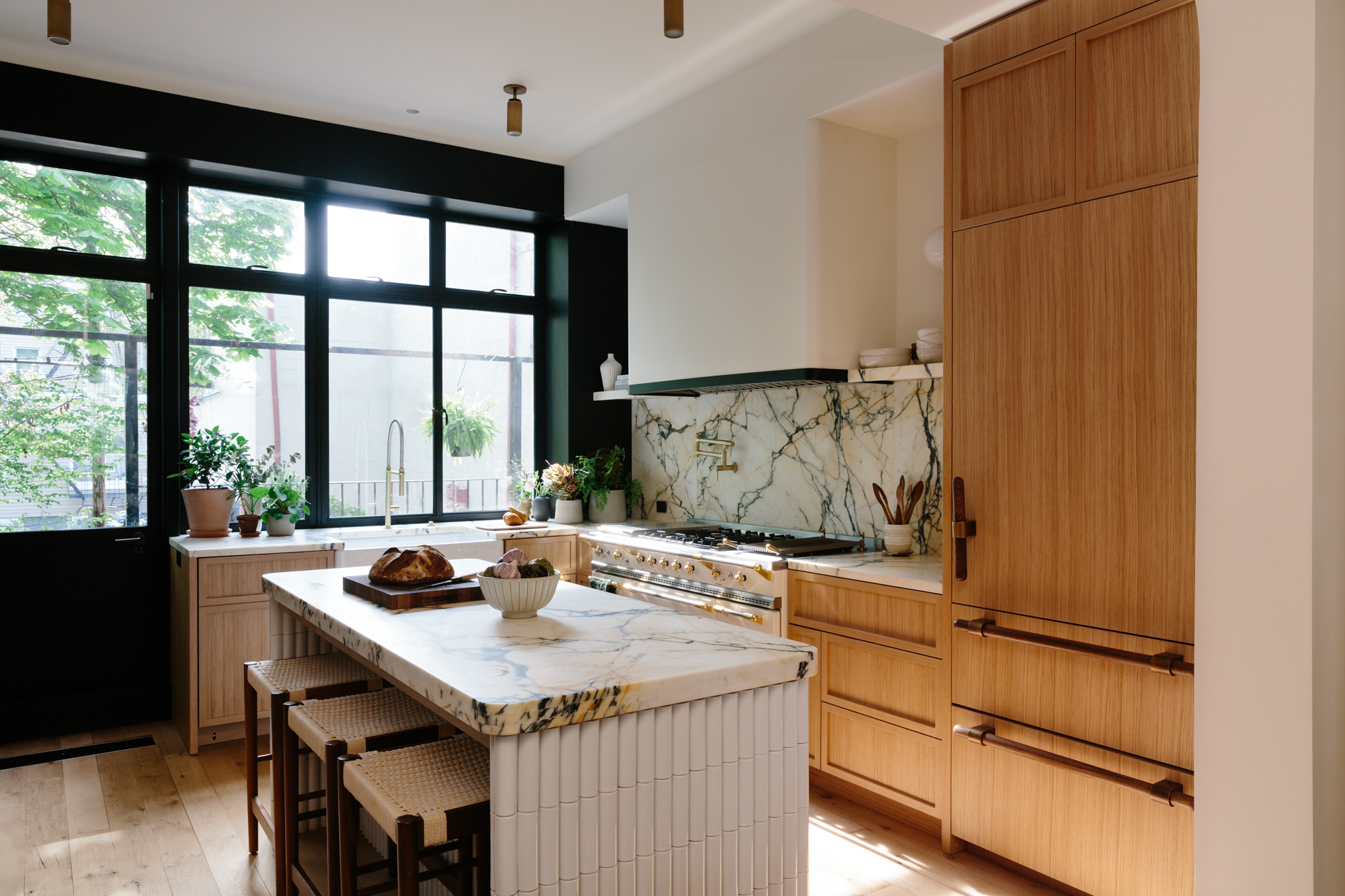The 20mm or 30mm Debate — Which of These Worktop Thicknesses Looks Better in a Modern Kitchen?
It's incredible to think how one centimeter can change the entire feel of your space — but these design experts say it absolutely can


If there was one thing my partner and I completely obsessed over during the three kitchen renovations we've survived together, it was the countertops. We both had strong feelings, agreeing it would set the tone for the kitchen and, in turn, our home. But the biggest decision was something altogether unexpected: did we want 20mm or 30mm countertop thickness?
This measurement refers to the thickness of the actual stone slab, which will then be used either as a standalone thickness for your counters or might be 'built up,' 'mitered,' or otherwise altered depending on your desired outcome of your countertop ideas.
While one centimeter might not seem like much, having gone through it, I would argue that your kitchen countertop thickness is perhaps the most important design decision in the space. “Not least of all because there is so much of it, it is used continually, and it requires a great effort and money to change," adds Connecticut-based designer David Natasi, owner of Connecticut design firm, Swain Street & Co.
But just as many designers and stone experts who would agree that the countertop thickness is a crucial decision, most would disagree on the “right” choice. That's because it's subjective and speaks to personal aesthetics. “Choosing the stone for your project is like choosing an art piece,” says Katibelle Sharkey, creative director and senior sales manager of BAS Stone, based in New York City. “You need to pick something that speaks to you on a deeper emotional level.”
If you were to ask Livingetc's editor, Hugh Metcalf, he'd say that generally, he sees finer countertops as the emerging trend in kitchen design right now, but that he has a soft spot for projects with super chunky worktops, too.
So, what's the difference, aesthetically speaking, and how do you choose between a 20mm vs 30mm countertop thickness? I've broken down the more technical details worth wrapping your head around below.
What Is the “Typical” Thickness of a Kitchen Countertop?

Firstly, is there a standard countertop thickness? Well, this depends on what kind of kitchen countertop material you've selected. Stones outside of marble (think granite, quartzite, etc.) can be more easily found in thicker dimensions, while the more exotic marbles from Italy tend to come in 20mm slabs.
The Livingetc newsletters are your inside source for what’s shaping interiors now - and what’s next. Discover trend forecasts, smart style ideas, and curated shopping inspiration that brings design to life. Subscribe today and stay ahead of the curve.
That said, more common types of marble, such as Italian Carrara, can easily be found in thicker, 30mm cuts. “A 30mm thickness is also more common with durable materials like quartzite, which are well-suited for high-use kitchen surfaces,” says BAS Stone's Katibelle Sharkey.
These aren't, however, the only countertop thicknesses on offer. You'll find super slim countertops, especially when made from materials like modern porcelain, as fine as 12mm. On the other hand, materials such as Corian countertops tend to start at around 38mm. If you want something supersized, even natural stone worktops are often found in sizes up to 50mm.

Katibelle Sharkey is the creative director and senior sales manager at BAS Stone, a New York City stone yard located in Long Island City, renowned for their refined and meticulously curated slab selection, which hails from all over the world. While innovative, the founders have been in the stone industry for over 50 years, giving Katibelle a unique perspective on using stone in interiors.
How Does Your Countertop Profile Impact Its Thickness?

Choosing decorative countertop edges and profiles can have some impact on the thickness of the slab, or how thick it appears.
A mitered edge, for example, refers to two pieces of stone cut at a 45-degree angle and placed together to create a 90-degree angle, which gives the appearance of a thicker outer edge. This technique allows fabricators to create nearly any appearance, from a chunkier edge on a kitchen countertop to a stone bathroom sink that appears several inches thick, to a waterfall edge that flows to the floor.
And there are other options too, from bullnose to bevel and Ogee, which all carry their own look and feel, particularly when it comes to thickness.
How Does Countertop Thickness Influence Its Style?

Fabricators can do pretty much anything with stone, which means you aren’t limited by the countertop thickness of the stone you select. But before you decide what you want the edge to look like, it's worth understanding that each carries a 'style' inherent in its profile.
“I tend to design in a more traditional style, and the thicker stone feels more appropriate,” says David Natasi.
Katibelle Sharkey echoes this sentiment, adding, “More contemporary kitchens will have a thinner edge and more classic cottage style kitchens will have thicker material.”
Alternatively, Jed Lind, principal of California-based Jed Lind Interiors, says, “In mid-century modern homes, 20mm countertops are quite fitting with the aesthetic and philosophy of the era, which was to use predetermined, off-the-shelf dimensions.”
David Natasi has worked in residential design as an architect and interior designer for over 20 years. Prior to opening his own firm, he worked at numerous prestigious studios, including Hilton VanderHorn Architects, in Greenwich Connecticut, and Ralph Harvard Inc. in New York City. He has a Masters of Architecture and a Master of Science in Historic Preservation from Columbia University.
Does Countertop Thickness Impact Its Durability?

Like all natural things, your stone countertop will age. Its edges will inevitably chip from an errant dropped spoon, and little acid-induced etch marks will likely appear if you ever cut a citrus fruit with any proximity to it. Do not fret, it will just make your kitchen feel lived in and appreciated.
But more importantly, do not let a fabricator talk you out of your choice of countertop thickness while cautioning you about the normal wear and tear your stone will take. If you are educated about how natural stone will age, you should feel comfortable in your decision — even if that means going for a thinner 20mm slab.
Some fabricators may warn you that this thickness is not as durable as a 30mm countertop would be, but provided a large enough piece of it is sitting on a level cabinet, it should be as reliably durable and functional as a thicker piece.
Fabricators can also be cautious in their recommendations, as it's their job to take the stone from the yard, cut it, and shape it to your specifications, and then deliver it safely to your home. Of such warnings, Jed Lind says, "I never listen," so neither should you.
So, as for how to choose between a 20m vs 30m countertop thickness, perhaps annoyingly, there is no 'right' or 'wrong' answer. It all depends on the material you're using, the style you're going for, and, of course, your budget (a 30m countertop will inevitably be more expensive than a 20m one).
Hopefully, though, you now feel more informed when deciding on your own kitchen renovation. And while you're doing your research, when it comes to countertop details worth considering, there are a few others that kitchen designers never overlook, and we've got all the information.

Kelly Hushin lives in New York City where her start in journalism led her to an eventual career in social media. She has been writing about design since 2007, first as one of the founding editors of Boutique Design magazine, where she developed a love and appreciation for interiors that would never leave. Since then, Kelly has worked across various media adjacent industries, from PR to advertising and research firms; eventually coming back to publishing at Hearst Magazines, followed by Conde Nast. From there, she went to Meta, where she has spent the last five years helping global media companies on their social and advertising strategies. The one throughline for Kelly has been a passion for and commitment to editorial, particularly design and travel media. Along the way she has continued to write about travel and design whenever and wherever possible, for publications like Hospitality Design, Elle Decor, Metropolis, Esquire, Interior Design, In Kind and more. Her experience writing about design gave her enough confidence to embark on a small kitchen renovation in Queens in 2012. Since then, she's completed two additional gut renovations of NYC apartments, the second of which she narrowly survived (kidding, but maybe also not kidding). She has an undying passion for print magazines, mid-century design, Timorous Beasties wallpaper (if you don't know, now you know), theater and anything British. She daydreams about owning a townhouse in Islington, London someday and vacationing in the Cotswolds and the Italian Dolomites.